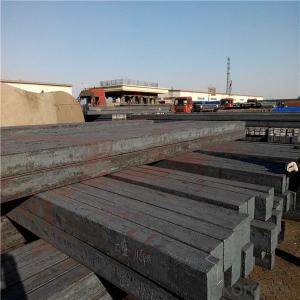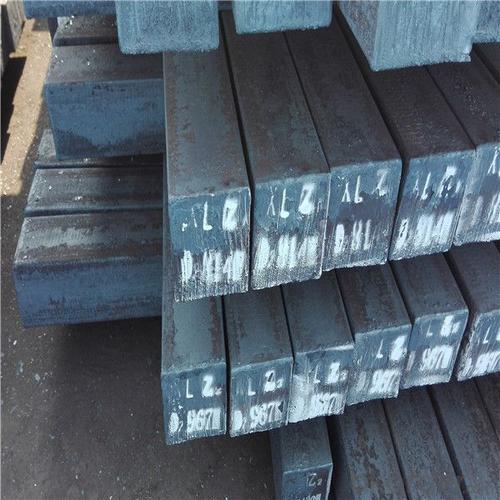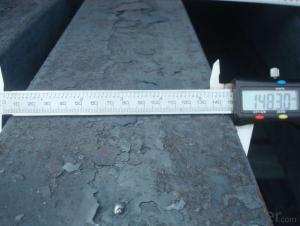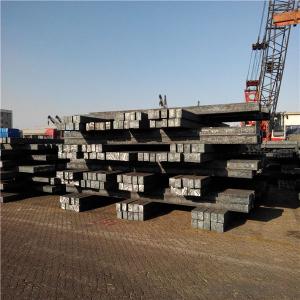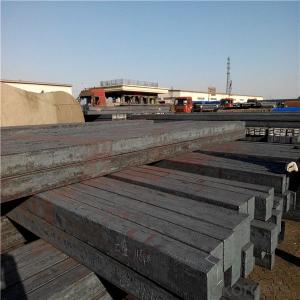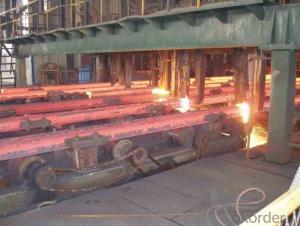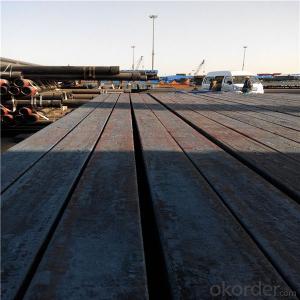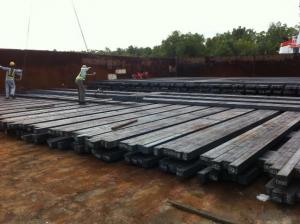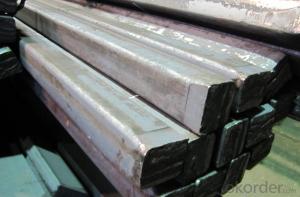Alloy steel billet square prime from china
- Loading Port:
- Guangzhou
- Payment Terms:
- TT OR LC
- Min Order Qty:
- 1000 m.t.
- Supply Capability:
- 31264 m.t./month
OKorder Service Pledge
OKorder Financial Service
You Might Also Like
Specification
Steel billet
Steel billets have distinct characteristics as compared with already furnished steel bars and products.
Billets have a specific grain structure, which enables the metal to be processed more intricately. Steel
billets are also known for their malleability and ductility, especially when exposed to varying temperatures
during shaping and molding.
Qaulity:own factory, stable quality
Tolerance: Strictly according to the G/B and JIS standard
Delivery time: within 45 days after receiving the L/C or advanced T/T payment.
Price term: FOB/CIF/ CFR according to clients requirements
Payment terms: 100%Irrevercable L/C at sight or T/T
Gade:
Standard | C(%) | Mn(%) | S(%) | P(%) | Si(%) |
Q195 | ≤0.12 | ≤0.50 | ≤0.040 | ≤0.035 | ≤0.30 |
Q235 | ≤0.20 | ≤1.40 | ≤0.045 | ≤0.045 | ≤0.35 |
Q275 | ≤0.22 | ≤1.50 | ≤0.045 | ≤0.045 | ≤0.35 |
20MnSi | 0.17-0.25 | 1.2-1.6 | ≤ 0.050 | ≤ 0.050 | 0.40-0.80 |
3SP | 0.14-0.22 | 0.40-0.85 | ≤ 0.050 | ≤ 0.040 | 0.05-0.15 |
5SP | 0.28-0.37 | 0.50-1.00 | ≤ 0.050 | ≤ 0.040 | 0.15-0.30 |
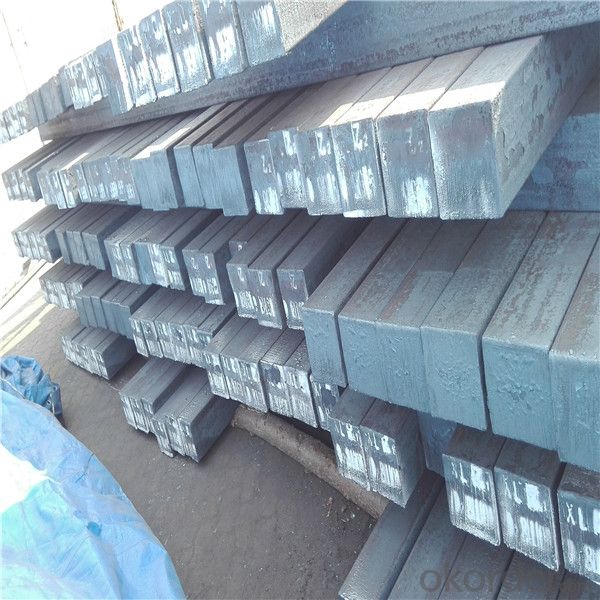
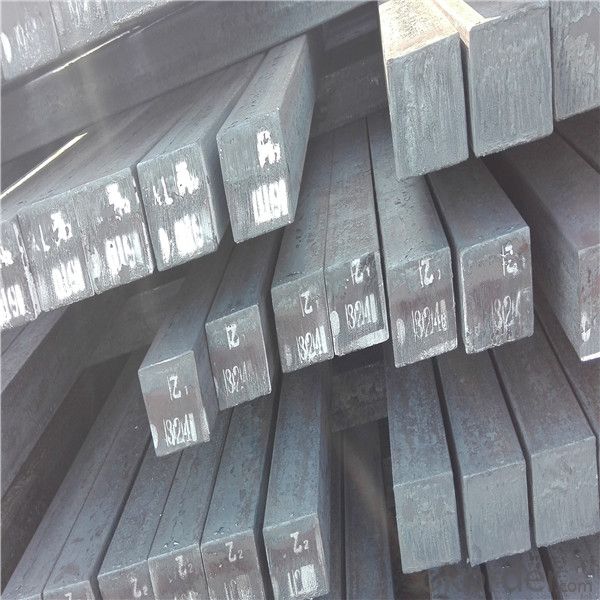
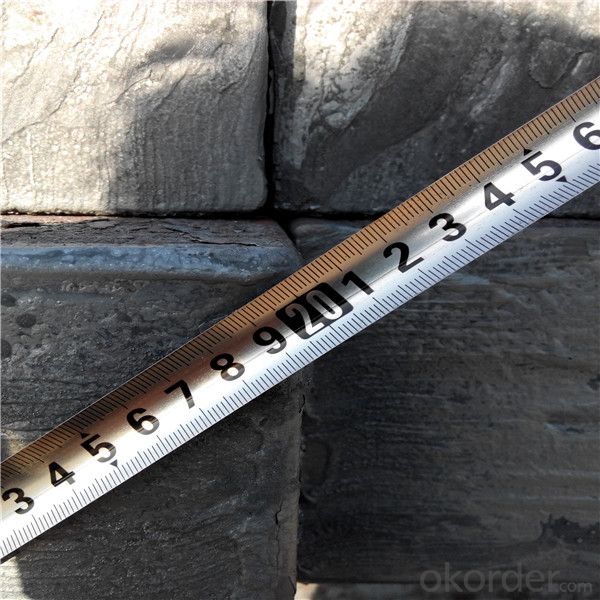
Our service :
We have a plant and professional team to provide our best service, from the start of production until the
loading into the vessel, we have a complete quality follow up procedure, to assure our products arrives to the customer with satisfaction. Welcome new and old customers
to contact us for future business relationships! We will give you a surpise price.
Packing :
Within 30 days
1.Standard export package
2.In bundles with steel strips
3.As the requirements of the customers
FAQ:
Q: What is payment terms?
A: FOB 30% T/T IN ADVANCE AS DEPOSIT AND 70% T/T BEFORE SHIPMENT
CIF and CFR 30% T/T IN ADVANCE AS DEPOSIT AND 70% T/T AS THE COPY OF B/L OR L/C AT SIGHT
Q:How to guarantee the quality of the products?
A:We have established the international advanced quality management system,every link from raw material
to final product we have strict quality test;We resolutely put an end to unqualified products flowing into the market.
At the same time, we will provide necessary follow-up service assurance.
Q:How long can we receive the product after purchase?
A :In the purchase of product within three working days, We will arrange the factory delivery as soon as possible.
The pecific time of receiving is related to the state and position of customers.
- Q: What are the different types of defects found in steel billets?
- There are several types of defects that can be commonly found in steel billets. These defects can occur during the manufacturing process or due to external factors. Some of the different types of defects found in steel billets include: 1. Surface defects: These defects are visible on the surface of the billet and can include scale, scratches, cracks, or pits. Surface defects can be caused by improper handling, inadequate cleaning, or excessive heat during the manufacturing process. 2. Internal defects: These defects are not visible on the surface and can only be detected through non-destructive testing methods. Internal defects can include voids, inclusions, segregation, or non-uniform microstructures. These defects can affect the mechanical properties and overall quality of the steel billet. 3. Decarburization: This defect occurs when the surface layer of the billet loses its carbon content due to exposure to high temperatures or oxygen. Decarburization can weaken the billet and reduce its strength and hardness. 4. Shrinkage cavities: Shrinkage cavities are formed when the steel billet solidifies and contracts unevenly. These cavities can lead to reduced mechanical properties and structural integrity. 5. Surface cracks: Cracks can occur during the cooling and solidification process of the billet due to thermal stresses. These cracks can propagate into the interior of the billet, leading to further defects and potential failure. 6. Segregation: Segregation refers to the uneven distribution of elements or impurities within the steel billet. This can result in inconsistent mechanical properties, reduced strength, and poor machinability. 7. Inclusions: Inclusions are foreign particles or impurities that are trapped within the steel billet during the manufacturing process. These inclusions can affect the mechanical properties and can cause defects such as porosity or brittleness. It is essential to minimize and control these defects in steel billets to ensure high-quality finished products. Proper quality control measures, material handling, and manufacturing processes can help reduce the occurrence of these defects and improve the overall quality of steel billets.
- Q: What are the different methods of steel billet surface coating?
- There are several methods of steel billet surface coating, including hot-dip galvanizing, electroplating, powder coating, and thermal spray coating.
- Q: How do steel billets contribute to the manufacturing of marine equipment?
- Steel billets are an essential raw material in the manufacturing of marine equipment. They serve as the starting point for various processes such as rolling, forging, and machining, which shape the billets into the desired components. These components, made from high-quality steel, provide strength, durability, and corrosion resistance necessary for marine equipment, ensuring their safe and reliable operation in challenging maritime environments.
- Q: What is the role of steel billets in the production of sheet metal?
- The production of sheet metal heavily relies on steel billets, which serve as the primary raw material. These billets are essentially solid bars of steel, typically rectangular or square in shape, and are produced through casting or hot rolling. Depending on the specific requirements of the sheet metal being manufactured, steel billets are produced in various sizes and lengths. To begin the production process, the steel billets are heated to a high temperature and then passed through a series of rolling mills. This rolling process is aimed at reducing the thickness of the billets and increasing their length. By applying pressure to the billets, they elongate and become thinner. This continuous rolling process is repeated multiple times until the desired thickness is achieved. Once the steel billets have been transformed into thin sheets, further processing is carried out to obtain the final sheet metal product. This may involve additional steps such as cutting, trimming, and surface treatments to enhance both the appearance and properties of the sheet metal. Steel billets are highly favored in the production of sheet metal due to their exceptional mechanical properties. Steel is renowned for its strength, durability, and malleability, making it an ideal material for sheet metal applications. By utilizing steel billets, the resulting sheet metal products possess these desirable properties. To summarize, steel billets serve as the starting point in the production of sheet metal. Through heating and rolling processes, the billets are transformed into thin sheets of steel, which are then further processed to create the final sheet metal products. The use of steel billets is crucial in ensuring the production of sheet metal with superior mechanical properties, making it an indispensable component in the manufacturing industry.
- Q: How are steel billets tested for internal defects?
- Steel billets are tested for internal defects through a variety of non-destructive testing methods. One of the most common methods used is ultrasonic testing (UT). During this process, high-frequency sound waves are transmitted into the billet, and the reflections of these waves are analyzed to detect any internal defects such as cracks, voids, or inclusions. UT can provide accurate and detailed information about the size, location, and nature of the defects. Another method used is magnetic particle inspection (MPI). This technique involves magnetizing the billet and applying iron particles to its surface. If there are any internal defects, the magnetic field will cause these particles to gather around them, making them visible and detectable. Eddy current testing (ECT) is also employed to assess the internal quality of steel billets. It utilizes electromagnetic induction to create eddy currents within the material. Any changes in the electrical conductivity or magnetic permeability caused by internal defects can be detected by analyzing the variations in the induced current. Additionally, radiographic testing (RT) is utilized to inspect the internal structure of steel billets. X-rays or gamma rays are directed towards the billet, and the resulting radiographic image can reveal any internal defects such as voids, cracks, or inclusions. Other methods, such as dye penetrant testing and visual inspection, can also be used to detect superficial and near-surface defects in steel billets. These methods involve applying a liquid or dye to the surface of the billet, which will seep into any cracks or surface irregularities, making them visible under certain lighting conditions. Overall, a combination of these non-destructive testing methods is employed to ensure the quality and integrity of steel billets by effectively detecting any internal defects that could compromise their structural integrity and performance.
- Q: What is a steel billet?
- The process of casting molten steel into a rectangular shape produces a semi-finished product known as a steel billet. This billet usually has a square or rectangular cross-section and serves as the initial material for various steel products. The size of a steel billet varies depending on its intended purpose, typically ranging from 100mm to 200mm square in cross-section and several meters in length. Rolling or extrusion techniques are employed to further process these billets, forming bars, rods, wires, or structural steel sections. Steel billets are extensively utilized in the manufacturing industry as a raw material for the production of diverse steel products used across sectors such as construction, automotive, machinery, and more.
- Q: How do steel billets contribute to the transportation industry?
- Steel billets play a crucial role in the transportation industry by being a primary raw material for the production of various components and parts used in vehicles. These billets, which are semi-finished steel products, are transformed into various shapes and sizes to meet the specific needs of different transportation applications. One of the key applications of steel billets in the transportation industry is in the manufacturing of engine blocks and crankshafts. These components require high strength and durability to withstand the rigorous conditions and stresses experienced by vehicles. Steel billets provide the necessary strength and toughness needed to ensure the reliability and longevity of these critical engine parts. Furthermore, steel billets are also used in the production of suspension and chassis components. These include items such as control arms, axle beams, and steering knuckles. These components are essential for maintaining stability, handling, and control of vehicles. Steel billets provide the necessary structural integrity and rigidity to ensure the safe and efficient operation of transportation vehicles. Additionally, steel billets are used in the manufacturing of various structural parts and components used in the construction of ships, trains, and airplanes. These include hulls, frames, beams, and supports. The high strength and corrosion resistance of steel make it an ideal material for these applications, ensuring the safety and reliability of transportation systems. Furthermore, steel billets are also used in the production of wheels and rims for various types of vehicles. These components require high strength and precision to ensure proper alignment and balance, allowing for smooth and efficient movement. Steel billets provide the necessary properties to meet these requirements, contributing to the overall performance and safety of transportation vehicles. In conclusion, steel billets are essential in the transportation industry as they are the foundation for the production of various components and parts used in vehicles. Their strength, durability, and versatility make them indispensable in ensuring the safety, reliability, and efficiency of transportation systems.
- Q: What are the challenges faced in the distribution and supply chain of steel billets?
- The distribution and supply chain of steel billets encounter several challenges. Firstly, transportation poses a major obstacle due to the heavy and bulky nature of steel billets. Specialized equipment and infrastructure are necessary, which can result in higher logistics costs and difficulties in finding suitable transport options, particularly for international shipments. Secondly, the storage and inventory management of steel billets present challenges. Proper storage facilities are required to prevent corrosion and damage. Moreover, managing inventory levels and ensuring timely deliveries become complex as steel billets are sourced from multiple suppliers and delivered to various locations. Thirdly, maintaining quality control is a significant challenge. Consistent quality throughout the supply chain demands strict adherence to quality standards and effective quality control measures. Regular inspections, testing, and certification processes are necessary to ensure the integrity and suitability of the steel billets. Another challenge stems from fluctuating demand and market conditions. The steel industry is highly cyclical, with demand and prices influenced by economic fluctuations and global market trends. Consequently, forecasting demand, managing production capacity, and optimizing inventory levels to meet customer requirements while minimizing costs become difficult. Furthermore, global trade regulations and customs procedures create challenges. Compliance with various import and export regulations, including trade restrictions and tariffs, can affect the flow of steel billets across different countries, leading to delays and additional costs. Lastly, ensuring sustainable and responsible sourcing practices is increasingly important. Meeting environmental and social standards, such as responsible sourcing of raw materials and reducing carbon emissions, poses challenges for steel billet manufacturers and distributors. Implementing sustainable practices throughout the supply chain may involve additional costs and complexities. In conclusion, the distribution and supply chain of steel billets face challenges related to transportation, storage, quality control, demand fluctuations, trade regulations, and sustainable sourcing. Overcoming these challenges necessitates effective planning, strong partnerships, and the implementation of efficient processes to ensure a smooth and reliable supply of steel billets to customers.
- Q: How are steel billets inspected for dimensional accuracy?
- Steel billets are inspected for dimensional accuracy through a series of rigorous processes to ensure that they meet the required specifications. These inspections are crucial as any deviations in the dimensions can have a significant impact on the final product's quality and performance. Firstly, steel billets are visually inspected to identify any surface defects or irregularities. This includes checking for cracks, surface oxidation, or any other visible abnormalities that could affect the dimensions. This visual inspection is often conducted by trained personnel who have an eye for detail and can identify even the smallest imperfections. After the visual inspection, the billets undergo dimensional measurement using various tools and instruments. One commonly used tool is a caliper, which is used to measure the length, width, and height of the billet. The measurements are compared against the specified dimensions to ensure they fall within the acceptable range. Any deviations beyond the tolerance limit are flagged for further investigation. In addition to calipers, other tools such as micrometers, height gauges, and coordinate measuring machines (CMM) may also be used to measure specific dimensions or features of the billet. These instruments provide more accurate and precise measurements, especially for critical dimensions that require a higher level of precision. Furthermore, non-destructive testing techniques are employed to assess the internal quality and dimensional accuracy of the billets. Ultrasonic testing, for instance, uses high-frequency sound waves to detect any internal defects or inconsistencies that may affect the dimensions. This method can identify hidden flaws such as voids, inclusions, or discontinuities, providing a comprehensive assessment of the billet's dimensional accuracy. Overall, steel billets are inspected for dimensional accuracy through a combination of visual inspections, dimensional measurements using various tools, and non-destructive testing techniques. By conducting these inspections, manufacturers ensure that the billets meet the required specifications, leading to high-quality final products.
- Q: Can steel billets be used in the production of industrial equipment?
- Industrial equipment can indeed utilize steel billets. These semi-finished metal products can undergo further processing to produce a wide range of industrial equipment, including machinery, tools, automotive parts, construction materials, and more. Steel's exceptional strength, durability, and adaptability make it the perfect material for manufacturing industrial equipment. By shaping, machining, and welding steel billets, intricate structures and components can be created, ensuring the necessary strength and stability for industrial applications. Furthermore, heat treatment can be applied to steel billets to enhance their mechanical properties, making them even more suitable for heavy-duty industrial equipment.
Send your message to us
Alloy steel billet square prime from china
- Loading Port:
- Guangzhou
- Payment Terms:
- TT OR LC
- Min Order Qty:
- 1000 m.t.
- Supply Capability:
- 31264 m.t./month
OKorder Service Pledge
OKorder Financial Service
Similar products
Hot products
Hot Searches
Related keywords

